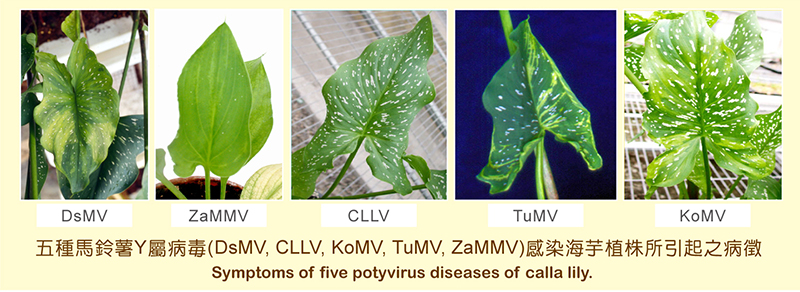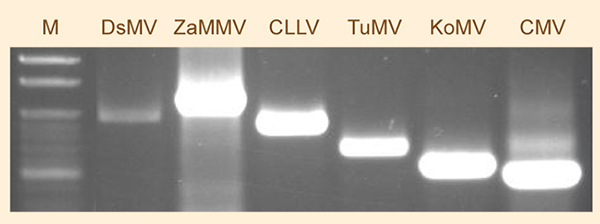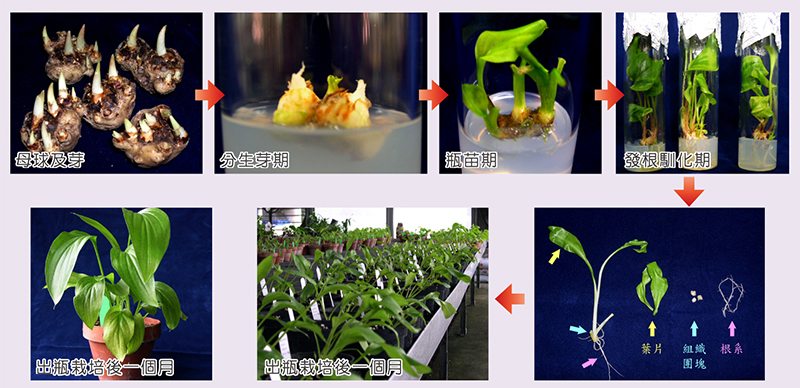Calla lily (Zantedeschia spp.), belonging to Araceae, is a popular ornamental crop in Taiwan and many other countries. Several diseases caused by viral pathogens are important in calla lilies. The calla lily research program at TARI sought to develop reagents enabling the detection of viral pathogens in calla lily tissues and to apply these reagents in its propagation program in order to produce virus-free calla lily seedlings. The research efforts resulted in the development of nine reagents for practical application in commercial calla lily production.
![]() Symptoms of five potyvirus diseases of calla lily.
Symptoms of five potyvirus diseases of calla lily.

![]() Large flowers of calla lily from healthy plants and small flowers from virus-infected plants.
Large flowers of calla lily from healthy plants and small flowers from virus-infected plants.

![]() Specific nucleic acid molecule detection reagents
Specific nucleic acid molecule detection reagents

Using RT-PCR technology to determine the type of virus in field samples of calla lily.
![]() Reagents developed at TARI for the detection of nine viral diseases of calla lily.
Reagents developed at TARI for the detection of nine viral diseases of calla lily.
- Dasheen mosaic virus (DsMV)
- Turnip mosaic virus (TuMV)
- Calla lily latent virus (CLLV)
- Konjak mosaic virus (KoMV)
- Zantedeschia mils mosaic virus (ZaMMV)
- Cucumber mosaic virus (CMV)
- Carnation mottle virus (CarMV)
- Capsicum chlorosis virus (CaCV)
- Watermelon silver mottle virus (WSMoV)
![]() Propagation of virus-free calla lily seedlings tissue culture techniques (top row) and indexing of different tissues for the presence of viruses (bottom row).
Propagation of virus-free calla lily seedlings tissue culture techniques (top row) and indexing of different tissues for the presence of viruses (bottom row).


